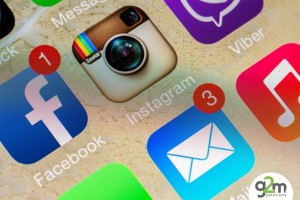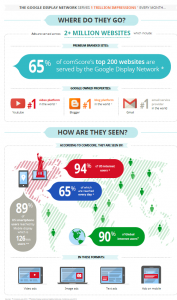During the 2014 Grammy’s, Twitter users pointed out a striking resemblance between Arby’s logo and singer-songwriter Pharrell Williams’s hat. Fortunately for the restaurant chain, its social media listening team was actively monitoring its brand terms on Twitter. It seized the moment and jokingly asked for its hat back in a tweet.
“At this point, everyone is familiar with our Tweet about Pharrell’s hat during the Grammy’s but they may not know it happened because we were listening,” writes Josh Martin, Arby’s social media manager, on Twitter’s blog. “The impact of that one Tweet is mind-blowing. Our PR firm estimates that the advertising equivalency would be 84 million impressions with a $ 22 million price tag. It’s even outpaced engagement on Oreo’s Super Bowl Tweet.”
Arby’s continued to tweet about the hat, and Pharrell later auctioned it on eBay for charity. Arby’s made the winning bid of $ 44,000, gaining more favorable publicity.
While the hat tweet was an extraordinary success for the social media monitoring team, it was just one example of Arby’s use of social media listening.
Constantly Listening
The company created a team that is constantly looking for opportunities to engage and respond. It offers light-hearted memes that connect the brand to current topics and responds to people mentioning its brand terms.
The restaurant chain monitors brand terms for opportune matches with trending topics and openings to join conversations. When it noticed a high volume of Tweets about turnovers during an NFL game, it tweeted with a photo of a turnover “All these turnovers have got us craving …. turnovers.”
“Social listening is the foundation to our approach on Twitter,” Martin stated.
Applications of Social Listening
These are 10 ways social listening can benefit businesses.
Obtain sales leads. When a potential customer asks about a product or mentions they are considering buying a new product, your team can respond with information. Several years ago someone tweeted: “Shoretel or Avaya? Time for a new phone system soon.” Avaya was listening. It tweeted back, saying it had information and courteously requested a phone call. Thirteen days later, it closed a $ 250,000 deal.
Respond to customer complaints. Social media monitoring enables brands to find negative customer comments in social networks that call for responses. Monitoring key social media networks and responding quickly is essential to stop an unfavorable discussion from spreading. Since most consumers expect response within an hour from major brands, 24/7 monitoring is preferable. Next-day response is essential for most all businesses.
Find user-generated content. Consumers frequently post photos of products online. Social listening enables you to share that content and engage with consumers. (Best to get permission before reusing a consumer’s content.) It’s important to identify content when it is posted, not months afterwards, and engage promptly.
Measure PR campaigns. By measuring PR results against business goals, listening can provide information about how well a PR campaign performed and insights into how to improve results in the future. In addition, monitoring and measurement of mentions in news and social media can show sentiment of all mentions. Many companies also compare their PR results to those of their competitors for better insights into how they are performing.
Manage PR crises. During the heat of a crisis, social media monitoring can provide the PR crisis management team with the most updated and accurate information. As the crisis evolves, monitoring can reveal the views of key consumer groups and important influencers such as journalists, bloggers and investors. Listening can also help identify ongoing issues that can explode into a crisis at any time.
Identify influential advocates. You are probably aware of the key influencers in your niche; however, depending on your industry, there could be another hundred or more influencers. And new influencers pop up regularly. An automated social media monitoring service can identify potential new influencers as soon as they emerge. Identifying them through manual searches would require many hours of staff time each day searching multiple social media networks for multiple keywords impacting your business.
Predict market trends. Social listening can help predict larger consumer buying patterns. To do that, monitor for industry terms and product categories, not just brand names. Monitoring products in your niche that you don’t sell can show if they are becoming more popular.
Obtain competitive intelligence. Occasionally checking a competitor’s website does not provide adequate information about how their marketing claims resonate with consumers. Tracking competitors on social media allows you to identify their strengths and weaknesses. Knowing their weaknesses allows you to target new customers.
Improve products. Companies can determine their product’s shortcomings and strengths by listening to social media conversations related to their products. Insights gained can help guide future product enhancements and develop new products. For instance, pharmaceutical and biotech firms have found that social media listening can be a valuable research tool to help better understand patient needs and patients’ reactions to side effects. Companies can also recruit customers through social media to participate in product trials, and then monitor social media to measure the product’s success.
Research your market. Companies like Nintendo and BlackBerry failed to keep pace with their rapidly changing market. Social media listening can quickly identify market issues, concerns and preferred product features.
And here’s a bonus advantage of social media monitoring …
Gauge brand health. The opinions people express on social media give real insights into how they feel about an organization and its products. It’s usually the first clue to problems that need to be fixed.
Bottom Line: Social media listening provides organizations both marketing and PR benefits. Companies can find new customers, improve products, research their markets, and improve their PR campaigns.
This article was originally published on the CyberAlert blog.
Digital & Social Articles on Business 2 Community(19)







